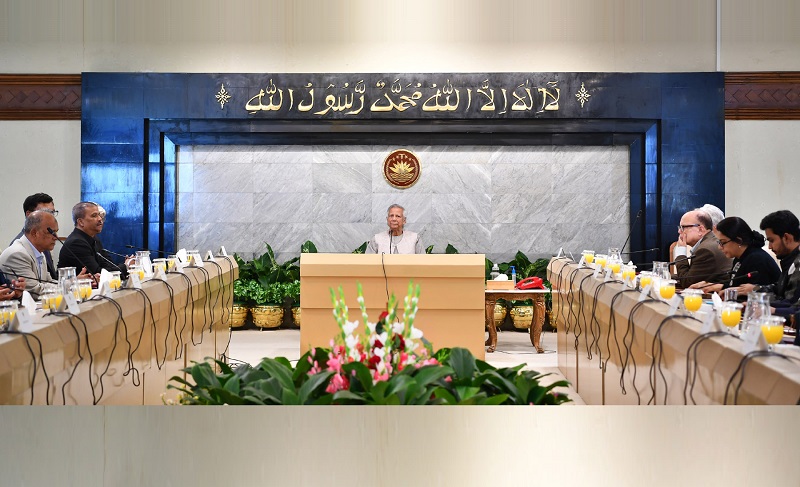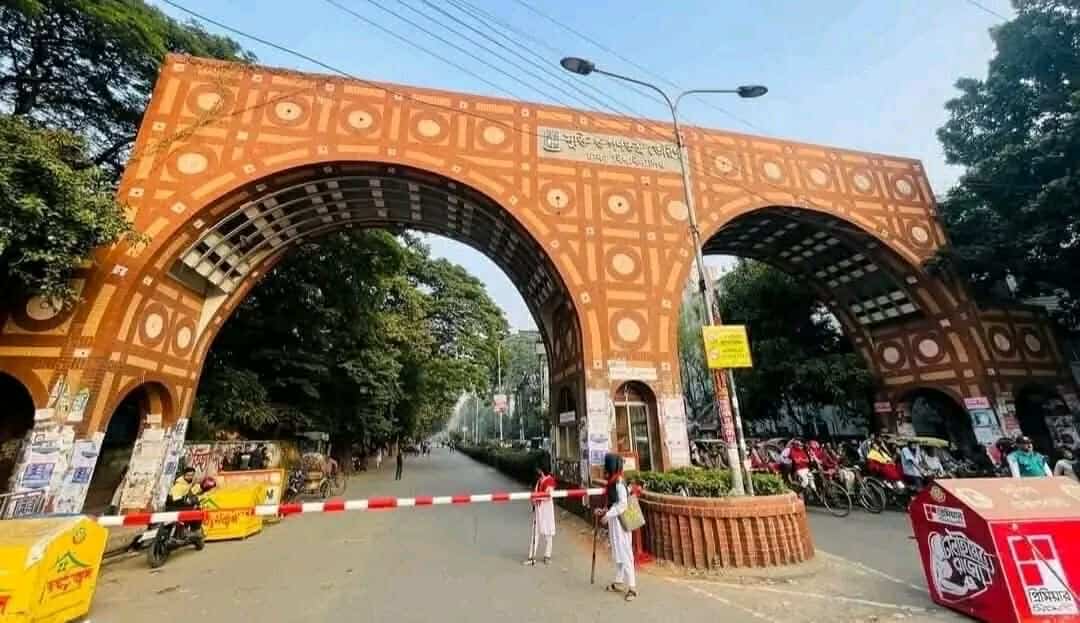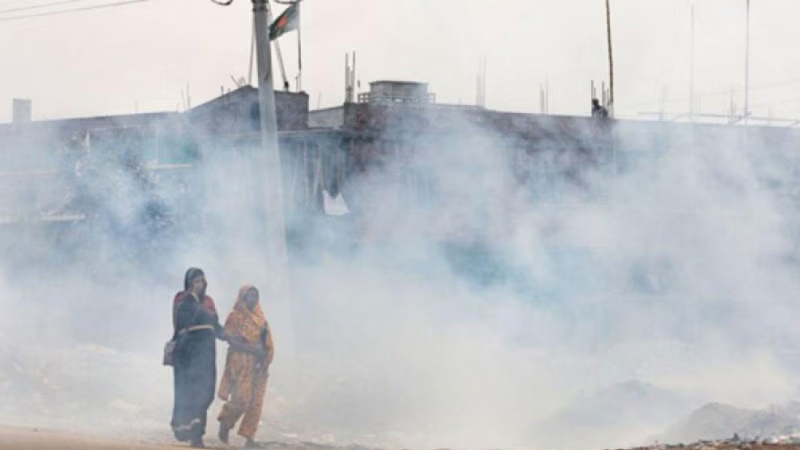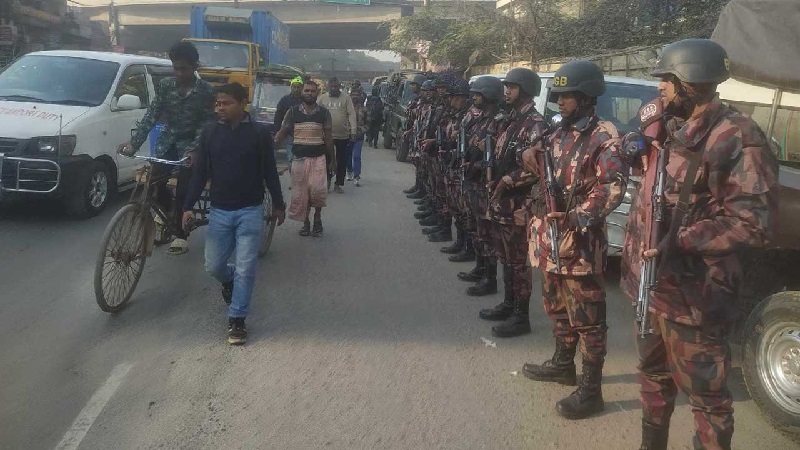Swelling rivers have swallowed 1,113 acres in five flood-affected districts in Rangpur division, destroying at least 656 houses, according to Water Development Board.
As seven rivers are now flowing over their danger marks at 14 points submerging villages after villages, the flooding permanently displaced people and forced them to take shelter on an embankment.
Floods triggered by heavy rains upstream continued to rage through ten districts until Wednesday, five days after the deluge started moving downstream on Saturday.
‘I know my situation is different from the others. I may never again head back to the direction I came from,’ said Helal Miah, who along with dozens of other families took shelter on the embankment at Mohishkhocha, Aditmari, Lalmonirhat.
Helal came to the embankment Wednesday morning, after losing his home at Gobordhan Char to erosion, and he knows he would have to head for a nearby town to find a place to live in a slum.
There are 76 other families who lost their place of living permanently since the flood began at Mohishkhocha alone and many of them have already headed for the city.
The families cannot afford to wait under the open skies for an indefinite time for the government would not reach them with help shortly and may never reach them at all, said Mosaddek Hossain, chairman, Mohishkhocha union parishad.
‘We cannot rely on the government much for it denied us an operational embankment though dozens of houses get eroded every year in several spells of flood,’ said Mosaddek.
The victims of erosion in chars often represent the poorest segment of the population who do not own extra land to move to after losing their houses in erosion.
As a result, many of them eventually choose to migrate to the cities.
A Refugee and Migratory Movements Research Unit estimate shows that 60 per cent of the people displaced by disasters such as floods and cyclones migrate to Dhaka, 20 per cent to Chattogram and the rest went to other cities.
Coast Trust, an NGO, said in the first five months last year disasters and climate-induced impacts displaced 1.70 million people in Bangladesh.
Rangpur divisional commissioner KM Tariqul Islam said that erosion displaces about 5,000 people in the region every year.
WDB northern region chief Jyoti Prashad Ghosh said that 656 houses vanished as 1,113 acres land was devoured by swollen rivers.
New Age correspondent in Kurigram reported that 500 families were affected by river erosion in the district as 30 km embankment was devoured by the Jamuna and Dharla.
New Age correspondent in Tangail reported that over a hundred families lost their homes to erosion caused by the River Jamuna since June.
WDB executive engineer Sirajul Islam said that nearly 23 km of the Jamuna coursing through the district was prone to erosion because no protection had ever been planned.
Many people relocated their houses while educational institutions and mosques were eroded in some parts of the unprotected areas recently, he said.
A government estimate shows that the River Jamuna eroded 40,150 hectares between 1984 and 1992.
The National Water Management Plan-2001 estimated that 10,000 hectares get eroded every year in Bangladesh.
The Jamuna and its tributaries were flowing above the danger level at eight places at Gaibandha, Kurigram, Bogura, Sirajganj, Jamalpur and Tangail, nearly one metre above the danger level at Bahadurabad.
The other rivers flowing above the danger level are Atrai, Dharla, Ghaghat, Padma and Surma.
A Flood Forecasting and Warning Centre bulleting said that the Jamuna may cross the danger mark at Aricha while the Padma at Bhagyakul by today.
The FFWC predicted the Padma to rise until Friday morning and the Jamuna to remain stable.
The flooding in Assam and Meghalaya, the upstream of Jamuna, worsened with one million marooned and over a dozen killed until Tuesday.
On Wednesday, Bangladesh Meteorological Department predicted short- to medium-range flooding of many areas of Bangladesh in July.
The BMD predicted light to moderate rains at many places at Rangpur, Mymensingh, Chattogram and Sylhet divisions until 9:00am Thursday.
The FFWC recorded the country’s highest rainfall of 175 mm at Chhatak in the 24 hours until 9:00am Wednesday and over 100 mm rain at Sunamganj during the same time.
India Meteorological Department predicted fairly widespread to widespread rains at Assam and Meghalaya, West Bengal and Sikkim, Bihar and East Uttar Pradesh through Sunday.













